
views
X
Research source
However, high fevers can be dangerous and require medical treatment, so it’s important to get an accurate temperature reading. There are many thermometer types and models available, and we’ll walk you through choosing the best one for you and your circumstances.
Thermometer Types
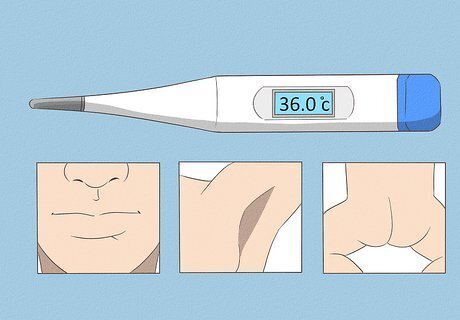
Use a digital thermometer in most cases. Digital thermometers are accurate and easy to use. They can be used to take a temperature rectally (in the anus), in the armpit (an axillary measurement), or orally (in the mouth).
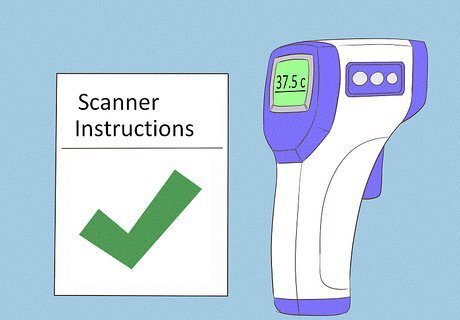
Minimize contact with a temporal scanner. Non-contact infrared thermometers allow you to take someone’s temperature without touching them—you simply point the device at their forehead and press a button. However, factors including humidity and perspiration can alter the readings. If you choose this type of thermometer, make sure to follow the manufacturer’s instructions.
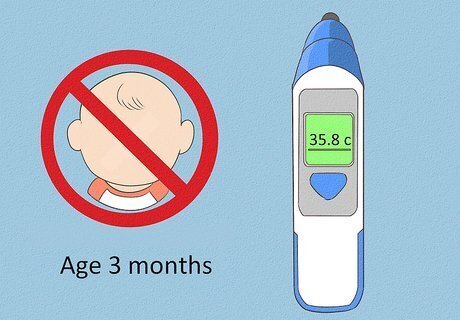
Try a tympanic thermometer if you’ve been trained on how to use it. Tympanic thermometers measure temperature in the ear canal. However, if they aren’t calibrated or used correctly, they can give inaccurate readings. If this is the only thermometer you have, you can use it, but a digital thermometer is generally a better choice. Avoid using a tympanic thermometer in a child under 3 months of age, as their ear canal may be too small to insert the probe into correctly.
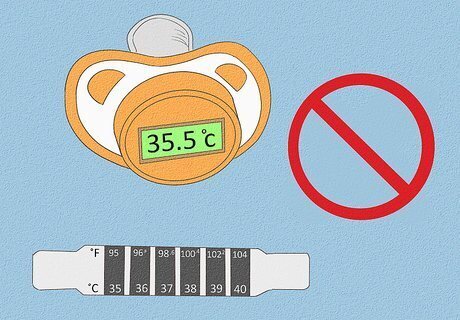
Steer clear of pacifier thermometers and thermometer strips. While convenient, these methods don’t always produce accurate readings. A digital thermometer is a better option, especially for children.
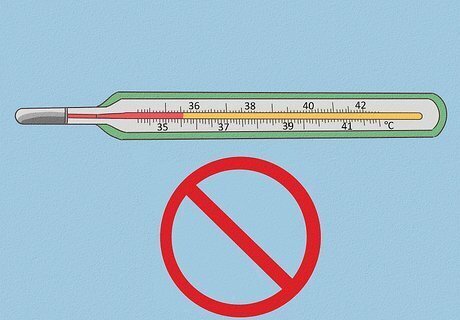
Avoid using mercury thermometers. While mercury-filled glass thermometers were a staple in the past, experts don’t recommend using them anymore. The glass can break, exposing you to mercury, which is poisonous. Upgrade to a digital or temporal thermometer for a safer, more accurate way to take a temperature.
Instructions for Use

Take rectal temperatures for the most accurate readings in small children. Have a healthcare provider show you how to take a rectal temperature properly before trying it at home. Cover the tip of a sanitized digital thermometer in petroleum jelly. Position your baby on their back and bend their knees, then gently insert the silver tip of the thermometer 1 inch (2.5 cm) into your baby’s rectum. Hold the thermometer in place with your fingers until it beeps (usually about 1 minute). At that point, you can remove the thermometer and check the temperature reading. The American Academy of Pediatrics recommends using a regular digital thermometer to take a rectal (anal) temperature until your child is about 3 years of age. If your child is under 3 months of age, the only way to get an accurate temperature is to take it rectally.

Measure temperature orally for an easy option. Wash the probe of a digital thermometer with cool soapy water first. Then, place the tip of the thermometer under your tongue toward the back of your mouth. Hold it in place until the thermometer beeps while breathing through your nose. Remove it and read the temperature, then clean the thermometer again. If your child is under the age of 5, it’s unlikely you’ll get an accurate oral reading. Wait 15 minutes after drinking or eating to take a temperature orally for the most accurate reading.

Try an axillary reading only for screening. Taking your temperature in your armpit provides a less accurate reading than other locations, though it is the most convenient option. Before you start, make sure the armpit is dry. Place the tip of the thermometer into the middle of the armpit, directly against the skin, and hold your arm close to your side. Wait until the thermometer beeps to check the reading. Wait at least one hour after heavy exercise or a hot bath before taking body temperature from the armpit or anywhere else. For better accuracy, take readings from both armpits and then average the two temperatures together.
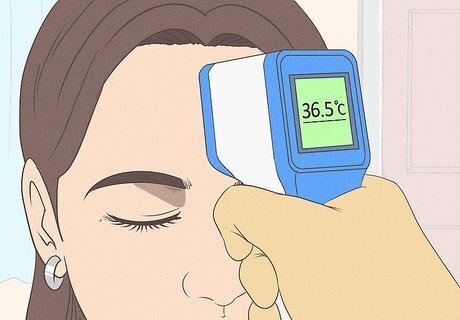
Check your temperature using a temporal scanner if you have one. Enlist a helper for this as you can’t take your own temperature accurately with a non-contact infrared thermometer. First, make sure your forehead is clean, dry, and not blocked by your hair or anything else. Ask the person to point the device perpendicularly at your forehead at the distance specified in the manufacturer’s instructions (as this differs between brands). Then, they can simply press the button to get an instant reading. To use a temporal artery thermometer, place the thermometer in the middle of your forehead. Press the scan button and slowly move the thermometer across the forehead toward the ear, making sure it stays in contact with your skin the entire time. When you get the hairline, stop pressing the scan button, and read the temperature.
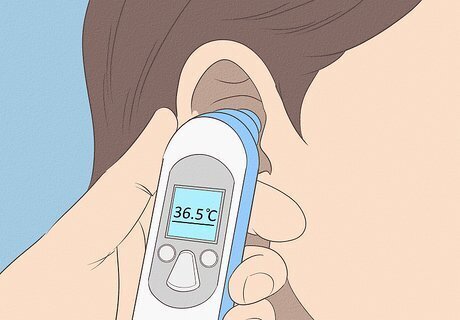
Use a tympanic thermometer to take a reading from the ear. Tympanic thermometers sense reflected infrared (heat) emissions from the tympanic membrane (eardrum). Turn on your tympanic thermometer, calibrate it if necessary, and place a disposable cover over the tip. Gently pull the ear back to straighten out the ear canal before inserting the tip of the thermometer into the ear. After about 2 seconds, the thermometer will beep and you can remove it to check the reading. Contrary to popular belief, earwax or ear tubes won’t affect a tympanic reading. Do not use an ear thermometer on an ear that is infected, injured, or recovering from surgery.
Temperature Reading Interpretation

Average: 98.6 °F (37.0 °C). Additionally, any temperature within the 97.5–99.5 °F (36.4–37.5 °C) range is considered normal. However, the location where you measure the temperature affects the reading. A normal rectal temperature is 97.9–100.4 °F (36.6–38.0 °C), a normal tympanic temperature is 96.4–100.4 °F (35.8–38.0 °C), a normal oral temperature is 95.9–99.5 °F (35.5–37.5 °C), and a normal axillary temperature is 94.9–99.1 °F (34.9–37.3 °C). This is because, in general: A rectal (anal) temperature is 0.5-1°F (0.3-0.6°C) higher than an oral temperature. A tympanic (ear) temperature is 0.5-1°F (0.3-0.6°C) higher than an oral temperature. An axillary (armpit) temperature is 0.5-1°F (0.3-0.6°C) lower than an oral temperature. A temporal (forehead) temperature is 0.5-1°F (0.3-0.6°C) lower than an oral temperature.

Low-Grade Fever: 99.6–100.3 °F (37.6–37.9 °C). A low-grade fever isn’t usually a cause for concern, as it means your body is fighting off an illness. However, if you have a child under 3 months of age with any fever, contact their pediatrician.

High Fever: 102 °F (39 °C) or above. A high fever can be dangerous, so monitor it carefully. Call you doctor if your fever (of any grade) lasts more than 48 hours. If your child is older than 3 months but younger than 1 year, contact their pediatrician for a fever at or above 102 °F (39 °C). For older children and adults, seek medical attention if you have a temperature over 105 °F (41 °C). Get emergency care right away if you have a fever and additional symptoms, including: Stiff neck Confusion Vomiting or diarrhea Seizure Irregular breathing Purple spotted rash Persistent sore throat Ear pain


















Comments
0 comment